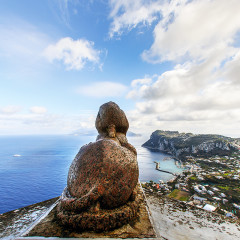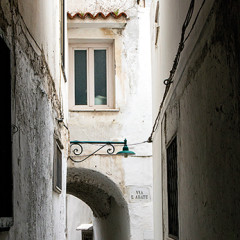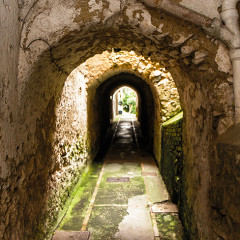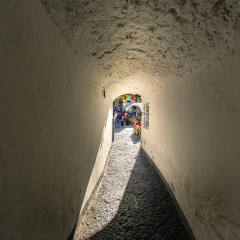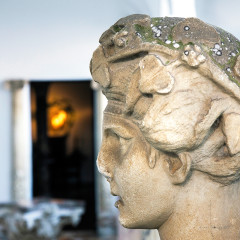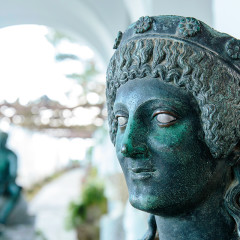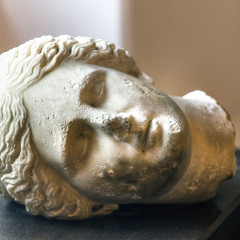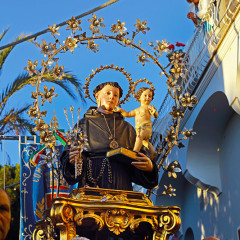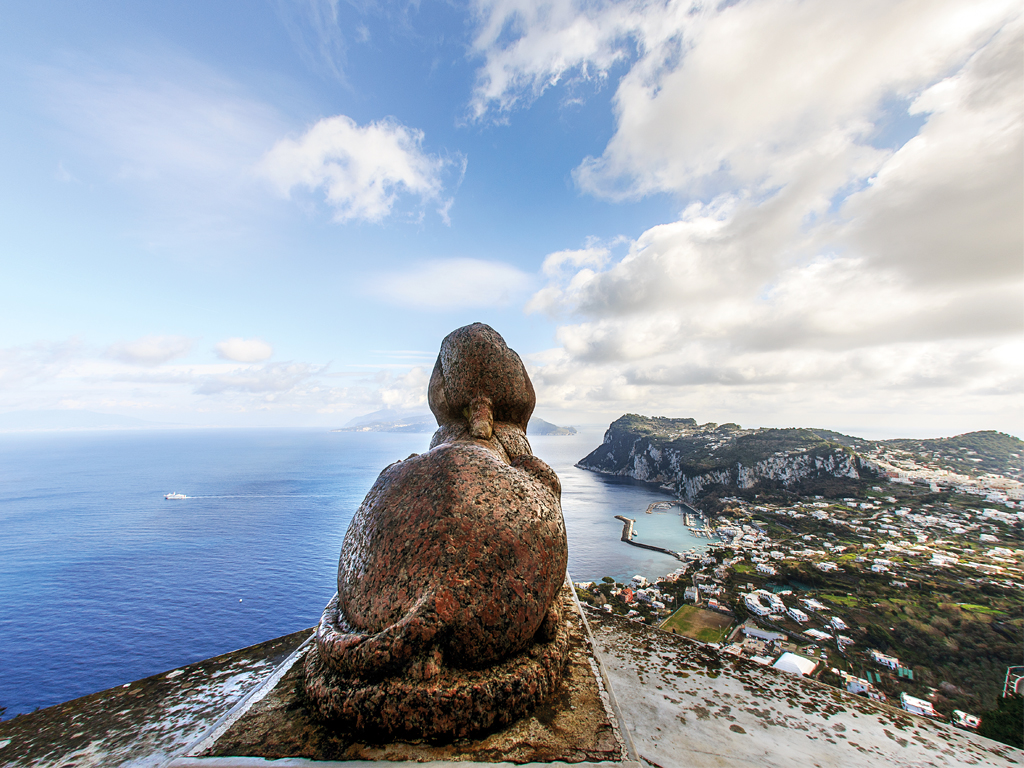
Ore capresi
Quelle di Henry James scorrono tra panorami mozzafiato, il labirinto dei vicoli e i giorni della festa dedicata a Sant’Antonio
di Daniela Liguori | foto di Raffaele Lello Mastroianni
«Bellissima, orrenda, popolata di presenze: questa è l’essenza di ciò che Capri vi dice di se stessa». Così Henry James descrive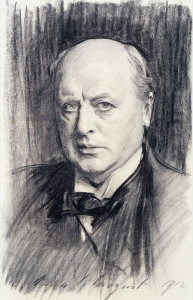 l’isola in Ore italiane, memoriale dei suoi numerosi viaggi e soggiorni compiuti in Italia. Animato – come scrisse Virginia Woolf – da un «irresistibile amore per la vita», lo scrittore americano si dedicò tuttavia alle sue due sole grandi passioni, i viaggi e la scrittura, deciso a comporre «immortali romanzi brevi e qualche racconto della stessa tempra». La sua vita appare così «priva di fatti»; nell’ombra anche le vicende della sua giovinezza che l’hanno segnata, quali una “misteriosa lesione” che gli impedì, appena diciottenne, di partecipare alla guerra di secessione e gli provocò danni fisici permanenti e il suo amore per la cugina Minny Temple.
l’isola in Ore italiane, memoriale dei suoi numerosi viaggi e soggiorni compiuti in Italia. Animato – come scrisse Virginia Woolf – da un «irresistibile amore per la vita», lo scrittore americano si dedicò tuttavia alle sue due sole grandi passioni, i viaggi e la scrittura, deciso a comporre «immortali romanzi brevi e qualche racconto della stessa tempra». La sua vita appare così «priva di fatti»; nell’ombra anche le vicende della sua giovinezza che l’hanno segnata, quali una “misteriosa lesione” che gli impedì, appena diciottenne, di partecipare alla guerra di secessione e gli provocò danni fisici permanenti e il suo amore per la cugina Minny Temple.
Poiché non si sposò mai e intrattenne con le donne sempre solo “amicizie amorose”, molti critici hanno teorizzato che fosse omosessuale e c’è chi, come Thomas Hardy, lo ha definito una “virtuosa signorina”.
Contagiato fin da piccolo da quel “virus europeo” che lo spingerà ad essere un “pellegrino appassionato” alla scoperta dell’Europa, James sbarcò per la prima volta a Capri nel giugno 1899. Aveva cinquantasei anni. Ospite a Villa San Michele del medico svedese Axel Munthe, fu tra i primi a visitare la villa che descrisse come una delle creazioni «dalla più straordinaria bellezza, poesia e inutilità riunite insieme che avesse mai visto».
Per lui Capri era “bellissima” per la sua «lucentezza ampia e confusa di rocce, picchi e contrafforti» visibili tra «l’azzurro del cielo e del mare», per i «vertiginosi punti panoramici», per il «meraviglioso raggrupparsi e disperdersi di stanze, angoli, cortili, gallerie, pergolati, archi, lunghi corridoi bianchi» che fanno sì che lo spazio “trabocchi” in una molteplicità di direzioni divenendo frammentario, discontinuo, poroso. “Orrenda” perché meta di turisti, per la maggior parte tedeschi e americani, dominati dall’ansia di vedere e consumare in fretta i suoi luoghi più rinomati, e perché segnata dall’eccessiva presenza di birrerie e di ristoranti «con sgradevoli nomi gotici». Un contrasto, questo, che emerge sin dalle prime pagine che Henry James dedica all’isola. La vista dei turisti che si accingono a visitare la Grotta Azzurra lo spingono, infatti, a pensare a «come sarebbe stato bello se nessuna di quelle persone ne fosse riuscita». «L’incanto, il fascino dell’idea – scrive – sta soprattutto – sebbene non interamente – nel moto delle onde che, quando si alzano sull’apertura, incoraggiano a credere che nessuno possa più emergere. Ecco, ci siamo, sono tutti spariti. È un evento cui la natura ha quietamente teso e che ha portato a compimento nel più abile dei modi e con il maggior tatto di questo mondo».
Ma il viaggiatore James è soprattutto alla ricerca dei luoghi in cui osservare l’unicità degli slanci ascensionali del paesaggio caprese, in cui scoprire i vicoli di «rozzi gradini scavati nella roccia» per attraversare i quali – non molto tempo addietro – ci si serviva ancora di asinelli, e in cui rinvenire le tracce della «profonda commistione di presente e passato». «Il castello di Barbarossa si ergeva sull’altura alle nostre spalle; la villa del tetro Tiberio dominava l’abisso sulla destra; i bianchi archi e le fresche stanze offrivano ad ogni passo qualche tenero, vecchio “frammento” del passato: un pilastro tondeggiante di porfido che fungeva da base ad un busto, una colonna di pallido alabastro posta a sostegno d’una pergola, una figura mutila di marmo, qualche ruvido bronzo sopravvissuto a stento». Capri è, inoltre, per lui l’occasione per fare esperienza della poesia che prorompe dalla «vita pubblica e privata del sud» sulle scale, nelle viuzze laterali, all’ombra delle chiese. Alla breve descrizione della Chiesa di San Michele – «un’architettura notevole e vistosa che può vantare la rarità di un magnifico pavimento in maiolica policroma» – si affianca così una più lunga digressione sulla vita che la anima: «in quest’ombra consacrata trovammo le donne più anziane che stavano lavorando a maglia, parlottando tra loro, sbadigliando e muovendosi con passo strascicato; (…) i bambini facevano chiasso giocando». La chiesa gli si rivela, dunque, come «salotto aperto a tutti» e «stanza dei bimbi», ossia come esempio di quell’appropriazione popolare dello spazio pubblico che egli individua come caratteristica dei costumi del Mediterraneo. Una appropriazione che è immagine speculare della più audace commistione di «allegria e civiltà» che “esplode” durante i giorni di festa. Lo stesso Axel Munthe ricorderà in La storia di San Michele come l’amico fosse affascinato e divertito dallo spettacolo di feste, come quella di Sant’Antonio, patrono di Anacapri, che “mettevano sottosopra” l’intero paese. «Vedo ancora – scrive – 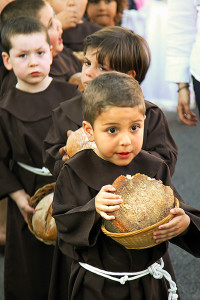
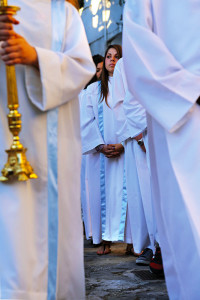 Henry James in pigiama, affacciato alla finestra della sua camera ridendo a crepapelle» mentre ascolta il risuonare, tutta la notte, di «canti, risa e musica». Dalla dettagliata descrizione che James dedica alla festa, si evince anche la sua ammirazione per quella religiosità allegra e rumorosa, fatta di «polvere, luci, sudore, conversazione», che rivela la “familiarità” degli abitanti del Sud Italia con il sacro. «Lassù sullo stretto pianoro al riparo delle splendenti e ombrose logge e sull’azzurro del golfo» la maggior parte degli abitanti “fa ressa” in attesa di una processione che «comprende così tanta gente da farci meravigliare che esista la possibilità di osservare una tale adunata di folla, come accade con le sciarade in famiglia cui tutti vogliono partecipare. Ma è davvero tutto come a casa propria quello che accade in questa comunità insulare rannicchiata qui in alto».
Henry James in pigiama, affacciato alla finestra della sua camera ridendo a crepapelle» mentre ascolta il risuonare, tutta la notte, di «canti, risa e musica». Dalla dettagliata descrizione che James dedica alla festa, si evince anche la sua ammirazione per quella religiosità allegra e rumorosa, fatta di «polvere, luci, sudore, conversazione», che rivela la “familiarità” degli abitanti del Sud Italia con il sacro. «Lassù sullo stretto pianoro al riparo delle splendenti e ombrose logge e sull’azzurro del golfo» la maggior parte degli abitanti “fa ressa” in attesa di una processione che «comprende così tanta gente da farci meravigliare che esista la possibilità di osservare una tale adunata di folla, come accade con le sciarade in famiglia cui tutti vogliono partecipare. Ma è davvero tutto come a casa propria quello che accade in questa comunità insulare rannicchiata qui in alto».
È quanto fa di Capri il luogo di una bellezza da non godere in solitudine, ma con «particolare allegrezza nell’audacia generale» e, insieme, «uno straordinario tempio dell’arte e dell’ospitalità».
Capri hours
The hours that Henry James spent among the breathtaking panoramas, in the labyrinth of alleys and on the feast days of St. Anthony
by Daniela Liguori | photos by Raffaele Lello Mastroianni
“Beautiful, horrible, haunted: that is the essence of what, about itself, Capri says to you.” Henry James describes the island thus in Italian Hours, a memoir of the numerous journeys he made and periods he stayed in Italy. Inspired, as – Virginia Woolf wrote – by an “irresistible love of life”, the American writer devoted himself to his two sole great passions: travelling and writing, determined to write “immortal short [novels] and some tales of the same quality.” So his life appears to be “without facts”; even events from his youth that seriously affected him remain in the shadows, such as the “mysterious injury” that prevented him from participating in the American Civil war when he was just eighteen and caused him permanent physical damage, and his love for his cousin Minny Temple. Since he never married and his relationships with women were only ever “amorous friendships”, many critics have theorized that he might have been homosexual, and there were those, like Thomas Hardy, who called him a “virtuous female”. Having caught the “European virus” early in his life, which drove him to become a “passionate pilgrim” keen to discover Europe, James landed on Capri for the first time in June 1899, at the age of fifty-six. He stayed at the Villa San Michele as a guest of the Swedish doctor Axel Munthe, and was one of the first to visit the villa, which he described as “a creation of the most fantastic beauty, poetry and inutility that one had ever seen clustered together.” For James, Capri was “very beautiful”, with its “great confused shining of hot cliffs and crags and buttresses” visible between “the blue of the air and sea”, the “wondrous cluster and dispersal of chambers, corners, courts, galleries, arbours, arcades, long white ambulatories and vertiginous points of view”, so that the spaces seem to “overflow” in a multiplicity of directions, becoming fragmentary, discontinuous and porous. It was “horrible” because it was a tourist destination, mainly for Germans and Americans dominated by the anxiety to see and rapidly devour all its most famous places, and because it was scarred with “breweries and ‘restorations’ and with great ugly Gothic names”. This contrast emerges straightaway in the first pages James devotes to the island. Indeed, the sight of tourists getting ready to visit the Grotta Azzurra drove him to muse about “how delightful it might be if none of them should come out again.” “The charm, the fascination of the idea,” he writes, “is not a little – though also not wholly – in the fact that, as the wave rises over the aperture, there is the most encouraging appearance that they perfectly may not. There it is. There is no more of them. It is a case to which nature has, by the neatest stroke and with the best taste in the world, just quietly attended.” But Henry James the traveller was above all bent on searching for places where he could observe the unique soaring cliffs of the Capri landscape, where he could discover the flights of “rude steps cut in the rock” where, until quite recently, it was necessary to use small donkeys to climb them; places where one could still see traces of the “deep interfusion of the present with the past.” “The castle of Barbarossa had been on the height behind; the villa of black Tiberius had overhung the immensity from the right; the white arcades and the cool chambers offered to every step some sweet old “piece” of the past, some rounded porphyry pillar supporting a bust, some shaft of pale alabaster upholding a trellis, some mutilated marble image, some bronze that had roughly resisted.” Capri, moreover, offered James the chance to experience the poetry that erupts from the “personal and social life of the south”, on the steps, in the side alleys, in the shade of the churches. His brief description of the Church of San Michele – “a considerable and bedizened structure, with the rare curiosity of a wondrous pictured pavement of majolica” – leads into a longer digression on the life going on at its heart: “Here in the sacred shade the old women were knitting, gossiping, yawning, shuffling about; here the children were romping and ‘larking’…” So the church revealed itself to be an “open parlour” and a “nursery”, in other words an example of that appropriation of public space by the people that he identifies as a characteristic of Mediterranean tradition. An appropriation that is a mirror image of the bolder intermingling of “civilisation and amenity” that explodes during the days of the festival. Axel Munthe also recalls, in his Story of San Michele, how his friend was fascinated and entertained by the spectacle of festivals like that of St. Anthony, the patron saint of Anacapri, which set the whole village “astir”. “I can still see Henry James looking down from his bedroom window, shaking with laughter, in his pyjamas” as he listened to the “singing, laughter and music the whole night long.” The detailed description that James gives of the festival also reveals his admiration for the joyful, noisy religiosity, made up of “dust, perspiration, illumination, conversation”, that reveals the “familiarity” the inhabitants of the South of Italy have with the sacred. “…Of the private beauty of the place, there on the narrow shelf, in the shining, shaded loggias and above the blue gulfs, all comers were to be made free”, while awaiting a procession which “includes so much of the population that you marvel there is such a muster to look on – like the charades given in a family in which every one wants to act. But it is all indeed in a manner one house, the little high-niched island community…”. It’s what makes Capri both a place of beauty that should not be enjoyed alone but with “special fun in the general bravery”, and at the same time an “extraordinary temple of art and hospitality.”
In viaggio con James
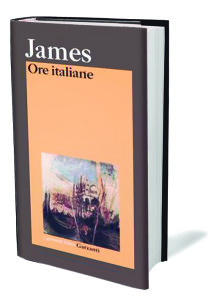 Viaggia e scrive. Centinaia di pagine. Un flusso ininterrotto di impressioni, divagazioni, incontri e suggestioni che va a riempire tanti taccuini. È la testimonianza di quel “mal d’Italia” provato da Henry James che darà vita alla splendida raccolta di scritti Ore italiane (Garzanti ed). Un memoriale dei tredici viaggi fatti nell’arco di quarant’anni, tra il 1872 e il 1909, dove esce prorompente tutto l’amore che il più europeo degli scrittori americani provava per l’Italia.
Storie, dettagli, ricordi, cose viste e pensate si snodano in una prosa intensa e intricata che parte dall’incanto della città sul Canal Grande e si conclude con il capitolo “Il pomeriggio del Santo Patrono ed altro”.
Quel pomeriggio è il pomeriggio del 13 giugno quando per le strade di Anacapri si festeggia Sant’Antonio. | Travelling with Henry James. He travelled and wrote. Hundreds of pages. An uninterrupted flow of impressions, digressions, encounters and suggestions that filled up a lot of notebooks. They are testimonies to the “homesickness” Henry James felt for Italy, that led to the splendid collection of writings with the title Italian Hours (Italian version: Ore Italiane – Garzanti ed). It’s a memoir of the thirteen journeys he made over forty years between 1872 and 1909, and overflows with all the love that this most European of American writers had for Italy.
Stories, details, memories, things that he saw and thought unfold in an intense, intricate prose that starts with his fascination with Venice and ends with the chapter “The Saint’s Afternoon and Others”.
That afternoon is the afternoon of 13 June when the festival of St. Anthony is celebrated on the streets of Anacapri.
Viaggia e scrive. Centinaia di pagine. Un flusso ininterrotto di impressioni, divagazioni, incontri e suggestioni che va a riempire tanti taccuini. È la testimonianza di quel “mal d’Italia” provato da Henry James che darà vita alla splendida raccolta di scritti Ore italiane (Garzanti ed). Un memoriale dei tredici viaggi fatti nell’arco di quarant’anni, tra il 1872 e il 1909, dove esce prorompente tutto l’amore che il più europeo degli scrittori americani provava per l’Italia.
Storie, dettagli, ricordi, cose viste e pensate si snodano in una prosa intensa e intricata che parte dall’incanto della città sul Canal Grande e si conclude con il capitolo “Il pomeriggio del Santo Patrono ed altro”.
Quel pomeriggio è il pomeriggio del 13 giugno quando per le strade di Anacapri si festeggia Sant’Antonio. | Travelling with Henry James. He travelled and wrote. Hundreds of pages. An uninterrupted flow of impressions, digressions, encounters and suggestions that filled up a lot of notebooks. They are testimonies to the “homesickness” Henry James felt for Italy, that led to the splendid collection of writings with the title Italian Hours (Italian version: Ore Italiane – Garzanti ed). It’s a memoir of the thirteen journeys he made over forty years between 1872 and 1909, and overflows with all the love that this most European of American writers had for Italy.
Stories, details, memories, things that he saw and thought unfold in an intense, intricate prose that starts with his fascination with Venice and ends with the chapter “The Saint’s Afternoon and Others”.
That afternoon is the afternoon of 13 June when the festival of St. Anthony is celebrated on the streets of Anacapri.






